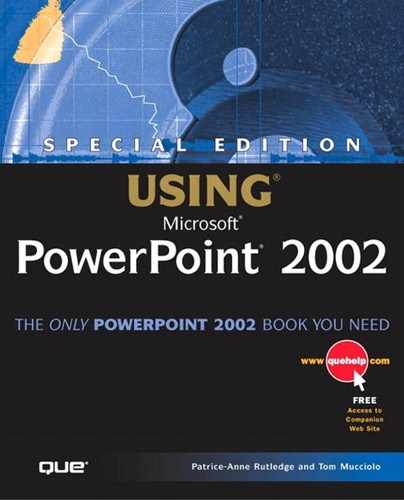Understanding Web Scripts
With PowerPoint 2002's Web functionality, you have the ability to save presentations as HTML documents and edit them in the Microsoft Script Editor. If you know HTML, you can edit HTML tags in this editor. If you know a scripting language, such as VBScript or JScript, you can create powerful scripts to augment and automate your Web-based presentations.
Today's two most popular Web browsers, Microsoft Internet Explorer and Netscape Navigator, have embedded inside them the general-purpose core of the lightweight, object-oriented programming language referred to as both JavaScript (in the case of Navigator) and JScript (in Internet Explorer). Possessing this embedded code enables browsers to read segments of the scripting language that have been written directly into HTML documents. This is referred to as client-side scripting.
Understanding the client-side/server-side distinction can be tricky, and it has slightly different connotations depending upon its application. For the purpose of this discussion, the server is the Web server, where Web pages actually reside. The home PC of a user connecting via the Internet is considered the client. This raises a question, however: If the Web page with embedded script is sitting on the Web server, why isn't this a server-sidescript? The answer is that the client home PC and its browser are reading the embedded code and executing it, and it is there that the execution takes place. This is the significant point in terms of the client/server relationship.
Scripting can also be applied on the server side, when code inside an HTML document points to a script file sitting on the Web server. The script is then executed, and the result is sent back to the client. This is especially useful for generating HTML content on-the-fly.
